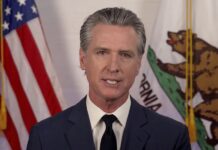A Washington Post story published in August suggests that Joe Biden’s agenda to spend billions of taxpayer money every day on organized labor benefactors is not working.
The headline, “Government workers feel inflation’s pinch as wage lags,” refers to just-released data from the U.S. Department of Labor that show that wages in the private sector increased by 5.5 percent in the past year — the largest increase in the history of the data. However, wages for state and local government workers saw a mere 3.4 percent increase.
Guy Berger, LinkedIn’s principal economist, stated that it is striking how low wages are for public sector workers. The sector is not doing well. It’s not one of the many sectors that are booming right now.
The story does not address whether the disparity is a temporary trend or a permanent swing in the pendulum.
Even though private sector wages seem to be rising more quickly in the short term, they still have a lot of work to do before those who produce goods and services for the country — and the tax revenues — catch up to those who consume them.
The Congressional Budget Office recently concluded that government employees earned 17 percent more than their counterparts working in the private sector. Recognizing that the CBO’s total compensation numbers include the benefits packages with government positions, while the WaPo story only focuses on wages, the discrepancy can easily be explained.
However, this is not the only important consideration that was left out of the article.
One thing is the question of basic economics. The story features several public employees and attempts to show that they aren’t getting paid for their labor. However, it is an often unpleasant reality that no one can be below the market rate in a free-market economy.
The Post profiled Spokane’s legal secretary as not being satisfied with her salary of $39,000. However, she is open to accepting a better offer. It’s possible that she hasn’t received an offer that exceeds her current total compensation package.
The Oder she might not have received any offers.
In either case, workers aren’t paid too low simply because their value is determined by the market and not by the arbitrarily calculated figures of other bureaucrats.
Even more important, why should government workers expect to be protected from double-digit inflation when their unions represent the single largest reason Biden is allowed to sit in the White House and make his absurd economic policies the law?
Tens of thousands have opted to leave since 2018, when Janus v. AFSCME, the U.S. Supreme Court, ruled that public employees can’t be forced to join a union or pay dues. Millions more are unable or unwilling to leave.
In the meantime, $27.5 million was poured by labor organizations into Biden’s 2020 presidential campaign, compared with just $360,000 by incumbent Donald Trump. Biden has faithfully kept his campaign promise that he would be the most pro-union president you have ever seen.
His gratitude manifested itself in many ways. From firing Trump’s Labor Relations Board counsel in minutes after taking the presidential oath to install a union crony on the job to larding his signature Build Back Better Infrastructure proposal with union giveaways to allowing teachers to rewrite Centers for Disease Control guidelines during the COVID pandemic.
Evidently, the only blessing Biden and his union cronies are yet to receive is a dispensation from economic ruin for everyone.
The best solution for government workers who are tired of seeing their wages go down due to inflation is to simply opt out of the union.
It will not only improve workers’ personal finances by keeping their dues dollars in their pockets, but it will also make unions more accountable for the members they claim to represent.
Public employees are not just to give them more money if they find themselves in a losing economic situation. It is to get their support in eliminating the reasons why.




